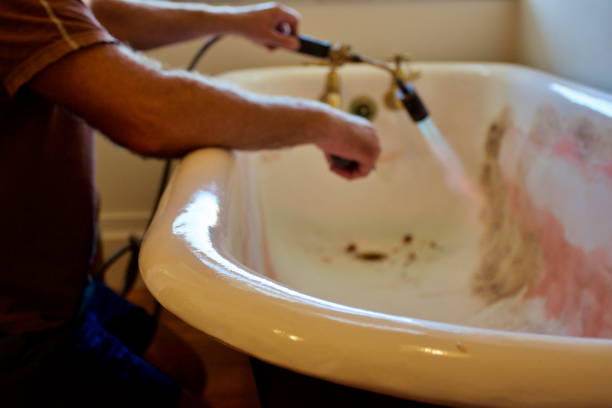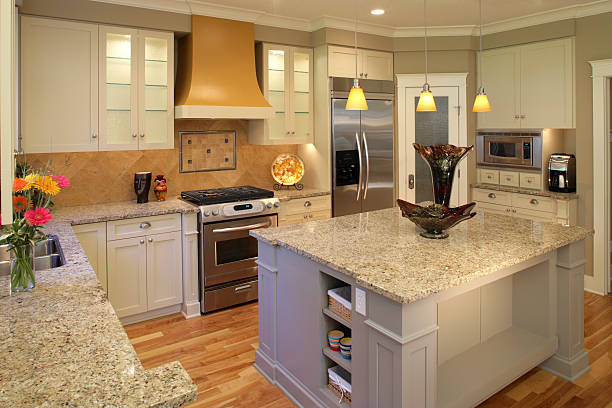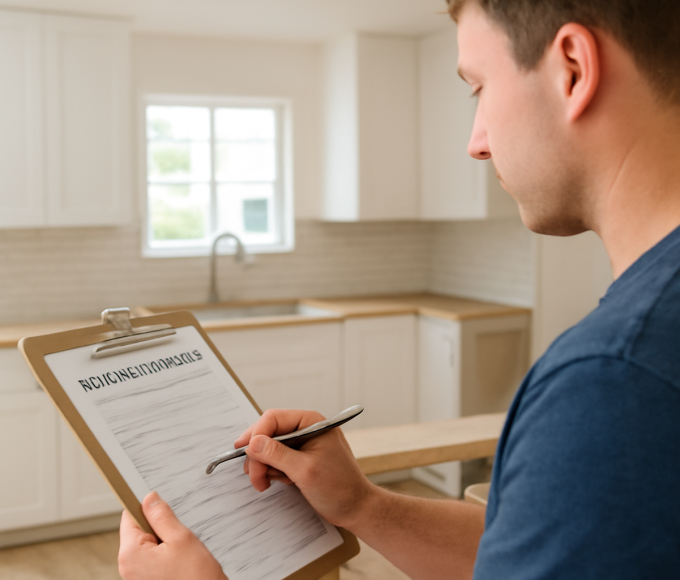A clean home should not wreck your budget. Yet the prices can feel confusing. If you’re wondering how much does a home cleaning service cost, you’re not alone. Many families ask this before they book. You want clear numbers, simple choices, and solid value. This guide delivers that in plain English. It shows you real ranges, what affects cost, and how to compare quotes. It also gives you a helpful table and quick tips. So, you can decide with confidence.
Prices vary by home size, location, and the cleaning. They also change with how often you book. However, there are reliable patterns. Most standard one-time cleans fall between $120 and $280. Deep cleans usually cost $200 to $400 or more. Hourly rates often sit between $25 and $80 per cleaner. These bands help you plan. They also help you spot quotes that seem too low or too high.
“Clear scope leads to clear pricing. Write down rooms, bathrooms, and any add-ons. Then ask for that exact scope in every quote.”
Finally, this guide aims to build trust because great decisions start with clear facts.
Average Costs at a Glance (2025)
People want a fast snapshot first. So here are the common ranges in 2025. These numbers reflect standard jobs in many U.S. markets. Your exact quote may differ. But these bands give a fair baseline.
- Standard cleaning (one-time): $120–$280 is common.
- Deep cleaning: $200–$400, sometimes higher for large or messy homes.
- Hourly rates: $25–$80 per cleaner, based on market and scope.
- Per square foot (standard): $0.08–$0.15 in many areas.
- Per square foot (deep): about $0.13–$0.30, due to extra effort.
- Move-in/move-out: often higher, and sometimes priced per square foot.
- Add-ons: windows, fridge, oven, and laundry usually add line items.
These ranges make choices easier. However, you still need to compare apples to apples. Ask each provider to list what is included. Also, ask about team size and time on site. Then you can judge value, not just price.
“Most homes pay less per visit with recurring service. The home stays cleaner, so each visit takes less time.”
Finally, remember simple math. A two-person team at $40 per hour per cleaner is $80 per hour. That adds up fast with wait time, travel, or extra tasks. So, it helps to plan your scope well.
Key Factors That Move the Price
Not all homes need the same work. Therefore, prices shift with the job. These key factors explain most changes:
- Home size and layout: More rooms and stairs take more time.
- Condition and clutter: First-time jobs or long gaps add effort.
- Scope and tasks: Baseboards, grout, and appliance interiors increase cost.
- Frequency: Weekly or biweekly plans often lower the per-visit rate.
- Location: Big cities tend to charge more than small towns.
- Team size: Two cleaners finish faster but boost hourly totals.
- Travel and parking: Long drives and parking fees sometimes appear in quotes.
- Products: Eco products can add a small premium in some markets.
These drivers matter. However, scope clarity matters most. Write down rooms, bathrooms, and add-ons. Then share photos if the home needs extra work. This step reduces surprises. It also helps the provider price the job right.
“Clear homes clean faster. Pick up floors and surfaces before the team arrives.”
Finally, timing can affect cost. Spring and holidays often increase demand. So book early if you want a specific day or a tight window.
Pricing Models
Different models fit different needs. Therefore, pick the model that matches your situation. If this is your first clean, an hourly cap can control risk. If you want simple bills, a flat rate can help. If the job is huge or complex, per-square-foot pricing may be best.
Hourly Pricing
Hourly pricing works well when the home’s condition is unknown. It also helps when you want a custom list. The provider tracks time and bills for the hours.
- Pros: Flexible scope; easy to add tasks on the fly.
- Cons: The final bill can be hard to predict.
- Tip: Set a time cap. Ask what the team will prioritize first.
Hourly rates often range from $25 to $80 per cleaner. A two-person team doubles the hourly total. However, a team can finish faster than one cleaner. So the total cost can still be fair.
Flat Rates
Flat rates offer one price for a clear list. Many families like the certainty. You agree on rooms, bathrooms, and key tasks.
- Pros: Predictable cost; simple to compare between companies.
- Cons: Quotes may rise after a walkthrough if scope changes.
- Tip: Share photos and note problem spots to avoid changes later.
A standard flat rate often lands between $120 and $280. Deep cleans usually cost more. Large homes or long gaps can push the number higher. But the model remains simple to review.
Per-Square-Foot Pricing
Per-square-foot pricing helps when homes are very large or very detailed. It also fits move-related or post-construction jobs.
- Pros: Scales to home size; easy to estimate for big spaces.
- Cons: Conditions can still change at the time of on-site.
- Tip: Confirm what the rate includes per square foot.
Common ranges run from about $0.08–$0.15 for standard work. Deep or complex jobs often run $0.13–$0.30. The move work can go higher due to the detail.
Per-Room Pricing
Some providers charge a price per room. Bathrooms often cost more because they take longer.
- Pros: Simple math; quick quotes when homes follow a pattern.
- Cons: Not ideal for unusual layouts or heavy buildup.
- Tip: Count rooms the same way across quotes.
Per-room ranges vary. However, many teams estimate $30–$50 for typical rooms and more for baths. These numbers shift by market and scope.
“Pick the model that you understand. When you get it, you can control it.”
Finally, ask for both models when possible. Compare a flat rate against a time-boxed hourly quote. Then choose the one that fits your risk comfort.
Cost by Home Size (Standard vs. Deep)
Size guides price more than any other single factor. Therefore, this simple table gives you a helpful starting point. It shows common ranges for standard and deep cleans. Your quote may fall outside these bands if the home needs extra work.
Table — Typical 2025 Price Ranges by Size
| Home Size (sq ft) | Standard Clean (Typical) | Deep Clean (Typical) |
| ≤ 1,000 | $75–$170 | $150–$300 |
| 1,500 | $150–$300 | $180–$375 |
| 2,000 | $190–$340 | $300–$600 |
| 2,500 | $250–$500 | $300–$625 |
| 3,000 | $300–$600 | $360–$750 |
These bands reflect wide U.S. markets. However, rates change with local wages and demand. Big coastal cities often cost more. Smaller towns often price lower. Add-ons also move the needle.
Here is a quick way to use the table. First, find your home size. Next, pick standard or deep based on your needs. Then adjust a little up or down for location and condition. Finally, ask three providers for the same scope. That last step keeps quotes fair and comparable.
“Ask for the same checklist from every provider. Then the prices will make sense.”
Also, think about time. Set a weekly or biweekly plan if you want a lower per-visit price. The home stays tidy. The visits often take less time. The cost per visit usually drops.
What Counts as “Standard” vs. “Deep” Cleaning
First, let’s define the work. A standard clean keeps your home tidy. It targets high-traffic areas and easy wins. A deep clean goes further. It tackles buildup, detail, and hard-to-reach spots.
Here is What Standard Service Often Includes:
- Dusting, sweeping, vacuuming, and mopping floors
- Wiping counters, sinks, and easy-to-reach surfaces
- Cleaning toilets, showers, and mirrors
- Taking out trash and straightening rooms
However, Deep Cleaning Adds Time and Detail:
- Washing baseboards, door frames, and switch plates
- Detailing grout, faucets, and corners
- Cleaning behind or under light furniture
- Inside-appliance work is listed in your scope
Because time is money, details change costs. Therefore, deep cleans usually cost 30% to 60% more. They also take longer. As a result, many families start with a deep clean. Then they move to a standard plan. That flow helps keep costs steady.
“Choose deep for the reset. Choose a standard to stay steady.”
Also, think about the season and life events. After a remodel, you may need deep work. Before a baby arrives, you may want extra details. Meanwhile, a weekly standard plan can hold the line. It cuts the need for big resets.
Finally, always list your expectations. Be clear about rooms, baths, and extras. Then ask each provider to confirm what is included. This step keeps quotes honest and fair. It also helps answer the question of how much does a home cleaning service cost for your home, not a generic one.
Specialty & One-Off Services (Move-Out, Post-Construction, Event)
Not every job is the same. Some days need targeted help. Therefore, providers offer specialty and one-off services. These jobs follow different rules and prices.
Move-in/move-out Cleaning Often Includes:
- Inside cabinets, drawers, and closets
- Inside the fridge and oven, if requested
- Detailed bath and kitchen cleaning
- Spot cleaning doors, trim, and walls as agreed
Because homes are empty, the work can be direct. However, the checklist is longer. Landlords or buyers expect higher standards. So costs can rise, especially for bigger homes.
Post-construction cleaning removes fine dust and debris. It may require special filters and extra passes. As a result, the team may return for a second sweep and address safety matters. Crews often bring ladders and masks. This preparation affects the quote.
After-event cleaning depends on the mess. Spills, trash, and food areas take time. Therefore, providers often price this like a deep clean. They may add fees for stain removal or odor work.
“Special jobs live by the checklist. Agree on that list before the date.”
Next, share photos when you ask for a price. Photos reduce guesswork. They also help set the right team size. Finally, expect a deposit or a minimum. These jobs block longer time slots. So companies guard their calendars.
If you still wonder how much does a home cleaning service cost for these tasks, start with the scope. Then add home size and timing. That simple formula keeps your estimate realistic.
Add-On Services & Typical 2025 Price Ranges
Add-ons change the job and the bill. Yet they can save a future visit. Therefore, it helps to price them early. You can choose what matters now and what can wait.
Common Add-Ons and Why They Vary:
- Windows (interior): Count and access drive price. Tall or tricky panes take longer.
- Fridge interior: Spills and stuck food add time. Clear it first to cut costs.
- Oven interior: Grease and burnt-on food may need extra soak time.
- Laundry: Sorting, washing, and folding add labor. Frequency lowers time.
- Baseboards: Dust level changes the effort. Wider trim needs more wiping.
- Carpet or rug work: Method and stains affect price.
Because add-ons are modular, you can bundle them—for example, pair a fridge and oven with a deep kitchen. Or schedule windows with a seasonal visit. Bundles reduce travel and setup time. Therefore, bundles may cost less per task.
“Add-ons are best in bundles. One setup, many wins.”
Also, ask for unit pricing. Ask per window, per load, or appliance. Then you can build your package. As a result, you control cost and scope.
Finally, share priorities. If the budget is tight, place tasks in tiers:
- Tier 1: Must-do today
- Tier 2: Nice-to-do this month
- Tier 3: Save for the next visit
This simple list keeps the team focused. It also answers how much does a home cleaning service cost when adding extras now versus later.
How Pros Build Your Quote: Labor, Overhead & Mileage
Quotes follow a simple engine: labor + overhead + margin. Labor is the biggest part. Overhead covers supplies, insurance, and admin. Margin keeps the business healthy. Therefore, a fair price supports quality and safety.
Labor: Teams charge by the hour or bundle time into a flat rate. Higher-cost cities pay staff more. So local wages shape your bill. Also, experienced cleaners work faster and better. They may cost more per hour. Yet they can finish sooner.
Overhead: Supplies, tools, and insurance matter. Eco products can add a small premium. However, they can help homes with kids or pets. Additionally, protective gear for post-construction raises cost. Ladders and shop vacs also add wear and tear.
Travel and timing: Distance, traffic, and parking affect the day. Therefore, some providers set a service area. Others add a fuel or parking fee. Early morning or late evening windows may raise rates. This is due to staffing and schedule strain.
“Time is the currency. Scope and travel spend that currency.”
Because Clarity Saves Time, Build a Clean Scope:
- List rooms, baths, and floors
- Note problem spots and pet hair
- Show photos for mold, grout, or appliances
- State your must-do items
Next, pick a pricing model you understand. A flat rate offers certainty. An hourly cap offers control. A per-square-foot rate scales to size. Finally, ask how teams handle add-ons found on the site. Some teams can add small tasks. Others need to rebook.
When you ask how much does a home cleaning service cost, remember this rule. If two quotes differ a lot, the scopes likely differ. Therefore, align the checklists. Then compare.
Regional Snapshots & Frequency Discounts
Prices shift across the map. Big metros often cost more than small towns. Wages, demand, and parking rules all play a part. Therefore, you should expect higher quotes in dense cities. However, smaller markets can still vary by neighborhood and travel time.
Regional norms shape hourly rates. Coastal hubs may quote near the high end. Mid-sized cities often sit in the middle. Rural areas may show lower rates, but travel can add fees, and seasonality matters. Spring and holidays can lift prices due to demand. So, book early if you want a set day.
Frequency changes price as well. Weekly or biweekly plans keep homes clean. Because the buildup stays low, visits take less time. As a result, your per-visit rate often drops. Monthly plans cost more per visit, yet save you from full resets. Finally, a first deep clean helps future standard visits run faster.
“Clean more often, pay less per visit. Clean less often, pay more per visit.”
For many families, this simple rule answers how much does a home cleaning service cost over the long run.
Table — Typical Frequency Plans and Savings
| Plan | Typical Per-Visit Impact | Notes |
| Weekly | 10–20% lower per visit | Lowest buildup; fastest visits |
| Biweekly | ~10% lower per visit | Popular balance of cost and time |
| Monthly | Little to no discount | May need extra tasks each time |
| One-time | Highest per visit | Setup, assessment, and detail time |
Budget Control: Smart Ways to Save
You can lower costs without lowering standards—first, tidy surfaces before the team arrives. Then cleaners can spend time cleaning, not picking up—also, group add-ons in one visit to cut setup time. Bundles can help you save real money.
Next, choose a recurring plan if your schedule allows. Weekly or biweekly service keeps grime down. Therefore, future visits take less effort and cost less per visit. Moreover, share priorities. Place tasks into “must-do” and “nice-to-do.” As a result, the team will focus where it matters most.
You can also set a time cap for hourly work. For example, cap a first visit at four hours. Then plan a second visit for the remaining list. This split keeps the bill predictable. Finally, ask for unit prices on windows, laundry, and appliances. Clear unit rates let you build a package that fits your budget.
- Declutter first to speed up the cleaning
- Bundle add-ons on the same day
- Try weekly or biweekly plans
- Set a time cap on hourly jobs
- Ask for unit pricing to mix and match
- Share “must-do” items up front
“Scope is your steering wheel. When you set it, you control the spend.”
Buyer’s Checklist: What to Ask Before You Book
Before you book, get answers in writing. Because clarity prevents surprises, use a simple checklist. Also, ask for a live walkthrough or clear photos. Then both sides will agree on the scope and price.
- What is included in standard vs. deep? Ask for a checklist.
- What is excluded? Note baseboards, grout, and appliance interiors.
- Team size and time on site? Confirm the usual visit length.
- Supplies and products? Ask about eco options and any fees.
- Insurance and bonding? Request proof for peace of mind.
- Travel, parking, and minimums? Note possible extra charges.
- Add-on unit rates? Price per window, per load, or appliance.
- Reschedule and cancellation rules? Confirm the window and fee.
However, do not stop there. Also, ask how they handle surprises on site. Some teams can add small tasks the same day. Others need to book again. Therefore, this detail guards your budget. Finally, save the quote and checklist. If questions come up later, you will have a record.
This short process makes prices fair and clear. It also sharpens your sense of value. As a result, the answer to how much does a home cleaning service cost stays grounded in your actual needs.
How to Get Comparable Quotes (Step-by-Step)
You deserve apples-to-apples quotes. Therefore, one scope is used for every provider. Then compare the numbers with confidence. This simple flow keeps your process tight.
- Define scope: List rooms, bathrooms, and floors.
- Flag problem spots: Note grout, pet hair, or heavy dust.
- Choose a model: Flat rate, hourly cap, or per-square-foot.
- Share photos or a walkthrough: Reduce guesswork and changes.
- Request add-on prices for Windows, fridge, oven, and laundry.
- Ask for timing: Team size and target time per visit.
- Confirm frequency options: Weekly, biweekly, or monthly.
- Get the total in writing: Include taxes and any travel fees.
Next, line up the quotes side by side. Are the inclusions the same? Are the add-on prices listed? If one quote is far lower, ask what they left out. If one is higher, ask what they added. Finally, ask each provider how they handle follow-up notes. Good follow-up protects your plan and your budget.
“Same scope, same format, three quotes. That is how you see real value.”
FAQs
1) How long does a standard visit take?
Most standard visits take two to four hours for typical homes. However, a two-person team may finish sooner.
2) Should I start with a deep clean?
Often yes, if it has been a while. A deep reset cuts future time. Therefore, later visits cost less per visit.
3) Do I need to be home during cleaning?
Not always. Many teams can clean while you work. However, be clear about entry and alarm rules.
4) How do I handle pets on cleaning day?
Place pets in a safe room or crate. Also, tell the team about fur and dander. Then they can bring the right tools.
Conclusion
You now have a clear plan. Start with your scope, home size, and cleaning type. Then pick the pricing model you understand. Also, choose a frequency that fits your life. After that, get three matching quotes. Finally, compare them line by line.
Remember the simple guardrails. Standard visits usually fall between $120 and $280. Deep cleans often land between $200 and $400 or more. Hourly rates often run from $25 to $80 per cleaner. Add-ons will raise the bill, yet bundles can help. Because you set the scope, you guide the cost.
With these steps, you can answer your core question with confidence: how much does a home cleaning service cost for your exact home and needs? Use the tables, lists, and tips to build a fair quote. Then book with peace of mind.

















Leave a comment